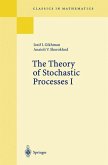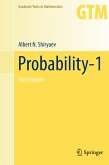Most probability problems involve random variables indexed by space and/or time. These problems almost always have a version in which space and/or time are taken to be discrete. This volume deals with areas in which the discrete version is more natural than the continuous one, perhaps even the only one than can be formulated without complicated constructions and machinery.
The 5 papers of this volume discuss problems in which there has been significant progress in the last few years; they are motivated by, or have been developed in parallel with, statistical physics. They include questions about asymptotic shape for stochastic growth models and for random clusters; existence, location and properties of phase transitions; speed of convergence to equilibrium in Markov chains, and in particular for Markov chains based on models with a phase transition; cut-off phenomena for random walks.
The articles can be read independently of each other. Their unifying theme is that of models built on discrete spaces or graphs. Such models are often easy to formulate. Correspondingly, the book requires comparatively little previous knowledge of the machinery of probability.
The 5 papers of this volume discuss problems in which there has been significant progress in the last few years; they are motivated by, or have been developed in parallel with, statistical physics. They include questions about asymptotic shape for stochastic growth models and for random clusters; existence, location and properties of phase transitions; speed of convergence to equilibrium in Markov chains, and in particular for Markov chains based on models with a phase transition; cut-off phenomena for random walks.
The articles can be read independently of each other. Their unifying theme is that of models built on discrete spaces or graphs. Such models are often easy to formulate. Correspondingly, the book requires comparatively little previous knowledge of the machinery of probability.
From the reviews: "The ... book contains five survey articles which span a very nice part of modern discrete probability theory. ... The world of discrete probability theory seems to be growing at an exponential rate and it is exactly for this reason that such surveys are not only welcome but essential. Each one of these articles is indeed very interesting and both the 'beginner' ... and the expert can learn a tremendous amount. In short, it is a wonderful book and to be recommended." (Jeffrey E. Steif, Combinatorics, Probability and Computing, Vol. 14, 2005) "This book covers probability problems with random variables whose indices take discrete values. The exposition is very clear and the book provides an introduction to the subject and to the mathematical formalism which is used. Each chapter is on a different topic, and it represents a clear, rather complete review of the state of the art of its own subject." (Guido Gentile, SIAM Review, Vol. 47 (3), 2005)








